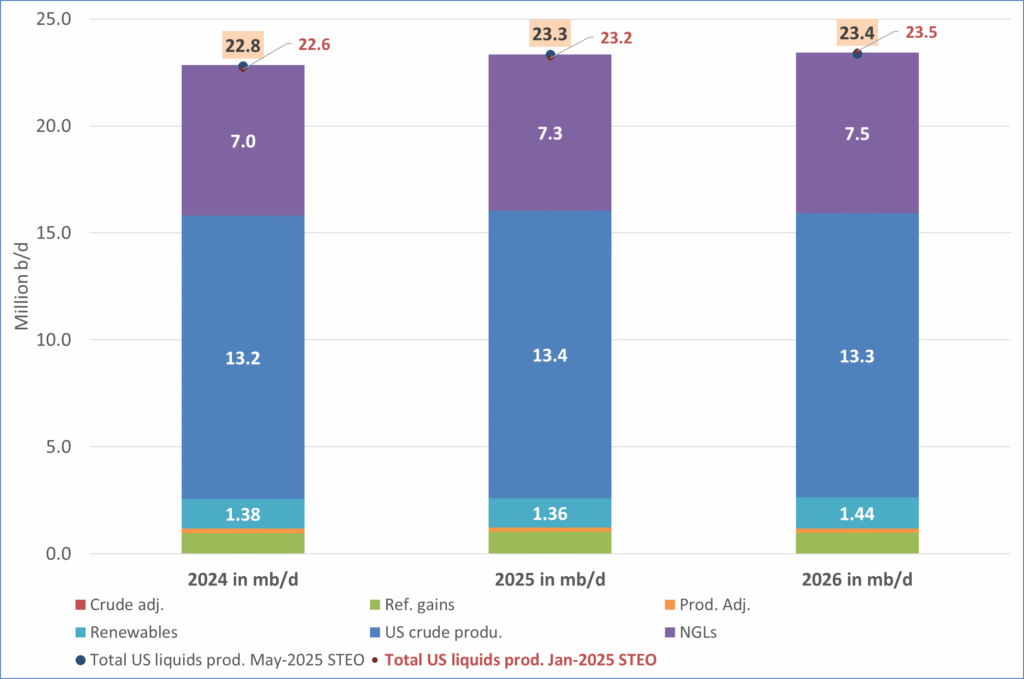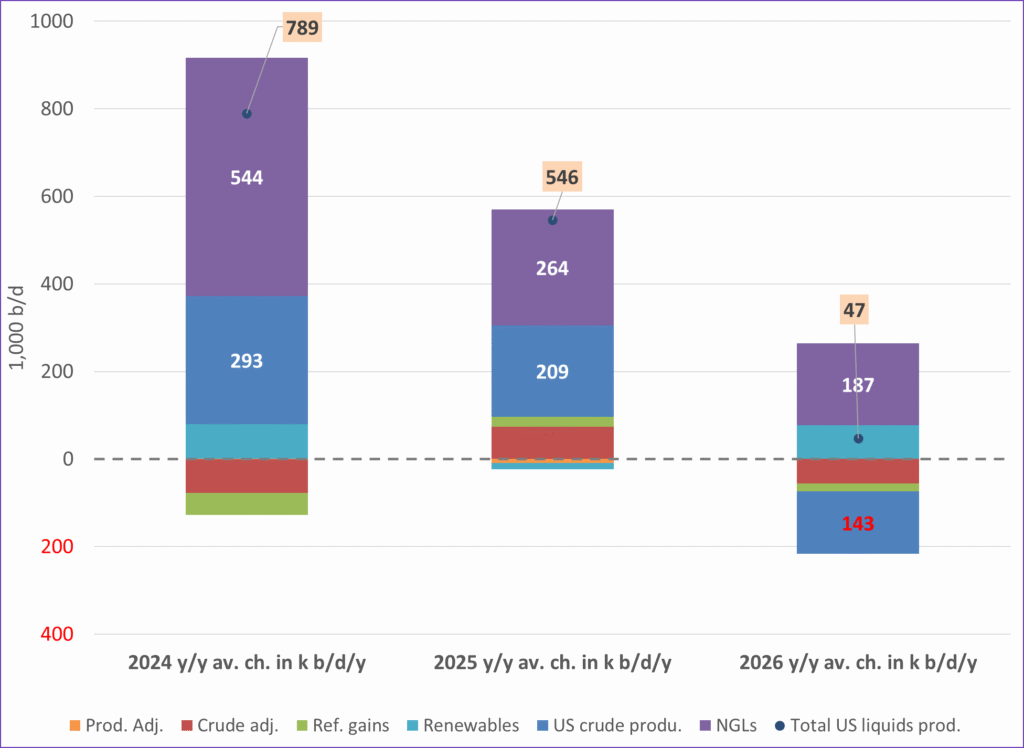Analys
OPEC must talk bearish on the curve

 It was nothing wrong with OPEC’s decision on November 30th to cut production in H1-17 by 1.16 mb/d versus October levels. What they did wrong and why their decision ended up being close to a shot in their own foot rather than a solution was their communication. When they decided to cut they gave a shine that they actually were back as a price setting organisation. Not just for the short term but also for the medium to longer term. The feel from the organisation at the end of November last year was the communication, stated or not, that OPEC don’t want an oil price below $50/b and that OPEC is aiming for an oil price of $60/b and lastly that OPEC was ready to use its size and muscles to support and achieve that. OPEC gave the shine that it was not just about a short term operation of draining the inventories. OPEC was actually there to support the level of $50/b and aim for $60/b. They probably had some remote hope and dream as well that they could actually deliver on this over the medium to longer term. I.e. that OPEC would again become the factor in the market setting the oil price within reasonable ranges. Deep down however they know that this is not in their power. In the longer term they have no control over prices. If the oil price heads to $30/b or $70/b (+/- $20/b versus today’s spot price) over the longer term it will have nothing to do with OPEC’s decisions but instead have all to do with technology, economic growth, investment cycles, resource availability etc. OPEC’s primary goal is to draw down current elevated inventories in order to remove the spot price discount versus longer dated contracts (whatever they might be). Last year that discount was $12/b and that cost OPEC a lost income of $150-200 bn as the organisation is mostly selling crude oil at spot prices.
It was nothing wrong with OPEC’s decision on November 30th to cut production in H1-17 by 1.16 mb/d versus October levels. What they did wrong and why their decision ended up being close to a shot in their own foot rather than a solution was their communication. When they decided to cut they gave a shine that they actually were back as a price setting organisation. Not just for the short term but also for the medium to longer term. The feel from the organisation at the end of November last year was the communication, stated or not, that OPEC don’t want an oil price below $50/b and that OPEC is aiming for an oil price of $60/b and lastly that OPEC was ready to use its size and muscles to support and achieve that. OPEC gave the shine that it was not just about a short term operation of draining the inventories. OPEC was actually there to support the level of $50/b and aim for $60/b. They probably had some remote hope and dream as well that they could actually deliver on this over the medium to longer term. I.e. that OPEC would again become the factor in the market setting the oil price within reasonable ranges. Deep down however they know that this is not in their power. In the longer term they have no control over prices. If the oil price heads to $30/b or $70/b (+/- $20/b versus today’s spot price) over the longer term it will have nothing to do with OPEC’s decisions but instead have all to do with technology, economic growth, investment cycles, resource availability etc. OPEC’s primary goal is to draw down current elevated inventories in order to remove the spot price discount versus longer dated contracts (whatever they might be). Last year that discount was $12/b and that cost OPEC a lost income of $150-200 bn as the organisation is mostly selling crude oil at spot prices.
It is in OPEC’s power to cut production and draw down inventories in the short term and thus remove the discount in crude oil spot prices. That is what they want. When the job is done the plan is to move back into full production again. That is however difficult if non-OPEC production has risen since when OPEC started to cut. That is the problem with the rising US crude oil production. It might be problematic for OPEC to move back into full production again once inventories have drawn down. So OPEC can cut as long as non-OPEC doesn’t revive when they do it. And that is where OPEC failed when they gave the shine that they were there also for the medium to longer term to support and set prices. “OPEC is back” was the perception. The result of OPEC’s actions, production cut decision and communication was that the medium term WTI forward crude oil prices rose from $52/b to $55-56/b and thus accelerated US shale oil recovery even more. And now we are here with US crude oil production at 9.1 mb/d and possibly reaching 9.5 mb/d in the end of May (if we extrapolate US production trend since the start of the year) when OPEC meets in Vienna on the 25th of that month.
OPEC can extend and cut production successfully in H2-17 but only if they get the communication right. They need to make it entirely clear that they have no plan to support or steer oil prices in any direction or to support the oil price at any specific level in the medium to longer term other than what the market actually stets it at. Everybody knows this anyhow it is just that markets so easily mislead themselves and gets side-lined from reality for periods. If OPEC wants to cut and draw down inventories they need to talk bearish on the curve in order to prevent it from rising while they cut since a rise in the curve would lead to an acceleration in US shale oil production and thus make it difficult for OPEC to move back into full operation again following the cuts. OPEC should make it clear that they plan to increase production according to their current market share along with global oil demand growth. OPEC has an overall market share of about 40%. If global demand grows with 1.3 mb/d then OPEC should make it clear that they plan to increase their production by 0.5 mb/d every year going forward. OPEC’s market dream is a tight spot oil market with high spot prices holding a substantial premium to longer dated prices. That would hand them a nice cash flow from spot crude oil sales while the much lower medium to longer dated oil prices constantly works to temper non-OPEC investments. A medium term forward WTI curve at $45/b would do the trick. So OPEC needs to talk bearish on the curve if they want to be successful with the cuts. If OPEC follows this strattegy it does of course mean downside risk for the medium to longer dated contracts. That will of course be no prediciton of where spot crude oil prices will deliver in the end. The forward curve is a tool in order to control investments in new oil production. More so than ever before with agile shale invenstments reacting directly on where the level of the forward prices are.
Kind regards
Bjarne Schieldrop
Chief analyst, Commodities
SEB Markets
Merchant Banking
Analys
Brent crude ticks higher on tension, but market structure stays soft

Brent crude has climbed roughly USD 1.5-2 per barrel since Friday, yet falling USD 0.3 per barrel this mornig and currently trading near USD 67.25/bbl after yesterday’s climb. While the rally reflects short-term geopolitical tension, price action has been choppy, and crude remains locked in a broader range – caught between supply-side pressure and spot resilience.

Prices have been supported by renewed Ukrainian drone strikes targeting Russian infrastructure. Over the weekend, falling debris triggered a fire at the 20mtpa Kirishi refinery, following last week’s attack on the key Primorsk terminal.
Argus estimates that these attacks have halted ish 300 kbl/d of Russian refining capacity in August and September. While the market impact is limited for now, the action signals Kyiv’s growing willingness to disrupt oil flows – supporting a soft geopolitical floor under prices.
The political environment is shifting: the EU is reportedly considering sanctions on Indian and Chinese firms facilitating Russian crude flows, while the U.S. has so far held back – despite Bessent warning that any action from Washington depends on broader European participation. Senator Graham has also publicly criticized NATO members like Slovakia and Hungary for continuing Russian oil imports.
It’s worth noting that China and India remain the two largest buyers of Russian barrels since the invasion of Ukraine. While New Delhi has been hit with 50% secondary tariffs, Beijing has been spared so far.
Still, the broader supply/demand balance leans bearish. Futures markets reflect this: Brent’s prompt spread (gauge of near-term tightness) has narrowed to the current USD 0.42/bl, down from USD 0.96/bl two months ago, pointing to weakening backwardation.
This aligns with expectations for a record surplus in 2026, largely driven by the faster-than-anticipated return of OPEC+ barrels to market. OPEC+ is gathering in Vienna this week to begin revising member production capacity estimates – setting the stage for new output baselines from 2027. The group aims to agree on how to define “maximum sustainable capacity,” with a proposal expected by year-end.
While the IEA pegs OPEC+ capacity at 47.9 million barrels per day, actual output in August was only 42.4 million barrels per day. Disagreements over data and quota fairness (especially from Iraq and Nigeria) have already delayed this process. Angola even quit the group last year after being assigned a lower target than expected. It also remains unclear whether Russia and Iraq can regain earlier output levels due to infrastructure constraints.
Also, macro remains another key driver this week. A 25bp Fed rate cut is widely expected tomorrow (Wednesday), and commodities in general could benefit a potential cut.
Summing up: Brent crude continues to drift sideways, finding near-term support from geopolitics and refining strength. But with surplus building and market structure softening, the upside may remain capped.
Analys
Volatile but going nowhere. Brent crude circles USD 66 as market weighs surplus vs risk

Brent crude is essentially flat on the week, but after a volatile ride. Prices started Monday near USD 65.5/bl, climbed steadily to a mid-week high of USD 67.8/bl on Wednesday evening, before falling sharply – losing about USD 2/bl during Thursday’s session.

Brent is currently trading around USD 65.8/bl, right back where it began. The volatility reflects the market’s ongoing struggle to balance growing surplus risks against persistent geopolitical uncertainty and resilient refined product margins. Thursday’s slide snapped a three-day rally and came largely in response to a string of bearish signals, most notably from the IEA’s updated short-term outlook.
The IEA now projects record global oversupply in 2026, reinforcing concerns flagged earlier by the U.S. EIA, which already sees inventories building this quarter. The forecast comes just days after OPEC+ confirmed it will continue returning idle barrels to the market in October – albeit at a slower pace of +137,000 bl/d. While modest, the move underscores a steady push to reclaim market share and adds to supply-side pressure into year-end.
Thursday’s price drop also followed geopolitical incidences: Israeli airstrikes reportedly targeted Hamas leadership in Doha, while Russian drones crossed into Polish airspace – events that initially sent crude higher as traders covered short positions.
Yet, sentiment remains broadly cautious. Strong refining margins and low inventories at key pricing hubs like Europe continue to support the downside. Chinese stockpiling of discounted Russian barrels and tightness in refined product markets – especially diesel – are also lending support.
On the demand side, the IEA revised up its 2025 global demand growth forecast by 60,000 bl/d to 740,000 bl/d YoY, while leaving 2026 unchanged at 698,000 bl/d. Interestingly, the agency also signaled that its next long-term report could show global oil demand rising through 2050.
Meanwhile, OPEC offered a contrasting view in its latest Monthly Oil Market Report, maintaining expectations for a supply deficit both this year and next, even as its members raise output. The group kept its demand growth estimates for 2025 and 2026 unchanged at 1.29 million bl/d and 1.38 million bl/d, respectively.
We continue to watch whether the bearish supply outlook will outweigh geopolitical risk, and if Brent can continue to find support above USD 65/bl – a level increasingly seen as a soft floor for OPEC+ policy.
Analys
Waiting for the surplus while we worry about Israel and Qatar

Brent crude makes some gains as Israel’s attack on Hamas in Qatar rattles markets. Brent crude spiked to a high of USD 67.38/b yesterday as Israel made a strike on Hamas in Qatar. But it wasn’t able to hold on to that level and only closed up 0.6% in the end at USD 66.39/b. This morning it is starting on the up with a gain of 0.9% at USD 67/b. Still rattled by Israel’s attack on Hamas in Qatar yesterday. Brent is getting some help on the margin this morning with Asian equities higher and copper gaining half a percent. But the dark cloud of surplus ahead is nonetheless hanging over the market with Brent trading two dollar lower than last Tuesday.

Geopolitical risk premiums in oil rarely lasts long unless actual supply disruption kicks in. While Israel’s attack on Hamas in Qatar is shocking, the geopolitical risk lifting crude oil yesterday and this morning is unlikely to last very long as such geopolitical risk premiums usually do not last long unless real disruption kicks in.
US API data yesterday indicated a US crude and product stock build last week of 3.1 mb. The US API last evening released partial US oil inventory data indicating that US crude stocks rose 1.3 mb and middle distillates rose 1.5 mb while gasoline rose 0.3 mb. In total a bit more than 3 mb increase. US crude and product stocks usually rise around 1 mb per week this time of year. So US commercial crude and product stock rose 2 mb over the past week adjusted for the seasonal norm. Official and complete data are due today at 16:30.
A 2 mb/week seasonally adj. US stock build implies a 1 – 1.4 mb/d global surplus if it is persistent. Assume that if the global oil market is running a surplus then some 20% to 30% of that surplus ends up in US commercial inventories. A 2 mb seasonally adjusted inventory build equals 286 kb/d. Divide by 0.2 to 0.3 and we get an implied global surplus of 950 kb/d to 1430 kb/d. A 2 mb/week seasonally adjusted build in US oil inventories is close to noise unless it is a persistent pattern every week.
US IEA STEO oil report: Robust surplus ahead and Brent averaging USD 51/b in 2026. The US EIA yesterday released its monthly STEO oil report. It projected a large and persistent surplus ahead. It estimates a global surplus of 2.2 m/d from September to December this year. A 2.4 mb/d surplus in Q1-26 and an average surplus for 2026 of 1.6 mb/d resulting in an average Brent crude oil price of USD 51/b next year. And that includes an assumption where OPEC crude oil production only averages 27.8 mb/d in 2026 versus 27.0 mb/d in 2024 and 28.6 mb/d in August.
Brent will feel the bear-pressure once US/OECD stocks starts visible build. In the meanwhile the oil market sits waiting for this projected surplus to materialize in US and OECD inventories. Once they visibly starts to build on a consistent basis, then Brent crude will likely quickly lose altitude. And unless some unforeseen supply disruption kicks in, it is bound to happen.
US IEA STEO September report. In total not much different than it was in January

US IEA STEO September report. US crude oil production contracting in 2026, but NGLs still growing. Close to zero net liquids growth in total.

-

 Nyheter4 veckor sedan
Nyheter4 veckor sedanMeta bygger ett AI-datacenter på 5 GW och 2,25 GW gaskraftverk
-

 Nyheter4 veckor sedan
Nyheter4 veckor sedanAker BP gör ett av Norges största oljefynd på ett decennium, stärker resurserna i Yggdrasilområdet
-

 Analys4 veckor sedan
Analys4 veckor sedanBrent sideways on sanctions and peace talks
-

 Nyheter4 veckor sedan
Nyheter4 veckor sedanEtt samtal om koppar, kaffe och spannmål
-

 Nyheter4 veckor sedan
Nyheter4 veckor sedanSommarens torka kan ge högre elpriser i höst
-

 Analys4 veckor sedan
Analys4 veckor sedanBrent edges higher as India–Russia oil trade draws U.S. ire and Powell takes the stage at Jackson Hole
-

 Nyheter3 veckor sedan
Nyheter3 veckor sedanMahvie Minerals är verksamt i guldrikt område i Finland
-

 Analys3 veckor sedan
Analys3 veckor sedanIncreasing risk that OPEC+ will unwind the last 1.65 mb/d of cuts when they meet on 7 September









